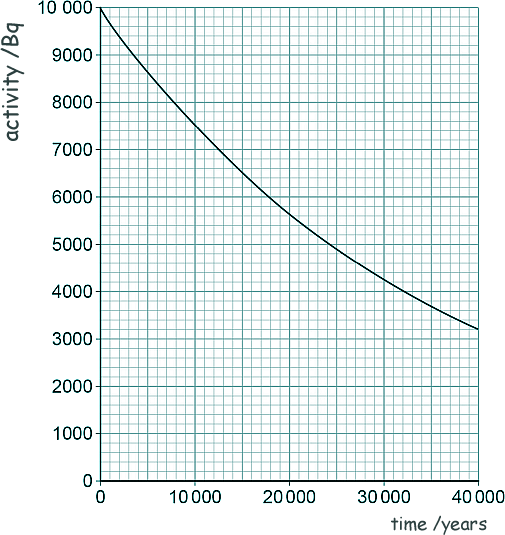GCSE Questions: Radioactivity Q9. Radioactive waste from nuclear power stations is a man-made source of background radiation. (a) Tick to indicate which of the following is also a man-made source of background radiation.
[1 mark]
(b) Nuclear power stations use the process of nuclear fission. Complete the following sentences to describe the process of nuclear fission. Choose answers from this box.
An unstable nucleus absorbs a neutron Two or three neutrons are released, as well as energy [3 marks] (c) Plutonium-239 is one type of radioactive waste from nuclear power stations. The following nuclear equation represents the decay of plutonium-239 (Pu-239).
How can you tell from the nuclear equation that alpha radiation is emitted when plutonium-239 decays? An alpha particle is the same as a helium nucleus, [1 mark] (d) The graph shows how the activity of a sample of plutonium-239 varies with time.
[1 mark]
[1 mark] (e) The radioactive waste from a nuclear power station is buried underground. People are warned to stay away from places where radioactive waste is buried. Suggest one risk of going near the place where radioactive waste is buried. Any one from:
[1 mark] (Total 8 marks) |
Follow me...
|







